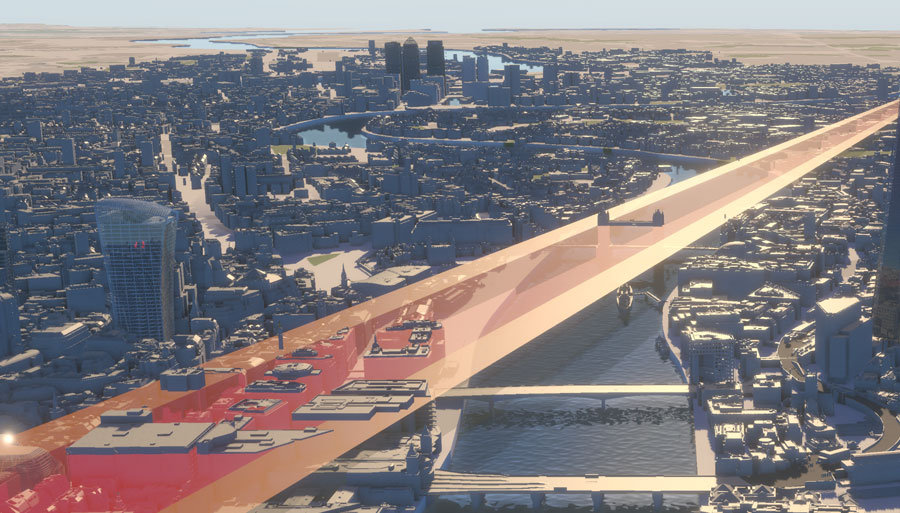But what could help to inform the debate further is the use of digital tools to help us see what London could look like in the future.
Where do we want to see tall buildings? Where will skyscrapers look appropriate? Do we want our skyline to look like Paris where the heights of buildings are restricted? Or do we want a skyline which looks like Bangkok or Dubai? How will tall buildings fit into the surrounding area? Should we have clusters of tall buildings in certain areas and if so where? Thanks to the forward march of technology and digital visualisation, we can be better informed than ever before to enable us to make decisions which could help us to future proof London.
The updated advice from Historic England, a Government body, acknowledges that tall buildings have a profound effect on the character of our cities and says careful consideration is needed on the design and location of tall buildings. It warns that tall buildings, by virtue of their size and widespread visibility, can seriously harm the character of an area. The Government body sounded the warning as a surge in the number of applications for tall buildings in London is underway. Research released earlier this year from New London Architecture found 263 tall buildings, which were more than 20 storeys, had been proposed, approved or were being built across the capital.
At a time when space is at a premium and there is a trend for building eye catching residential and office developments, there has never been a more crucial time to consider what we want the skyline of London to look like. Or we may find that one day we look back wishing we had made different planning decisions when it is too late. Once a building is constructed it is unlikely to be knocked down for a long time.
The debate around these issues is currently being illustrated by Paddington Place, often referred to as the West End Shard. Questions are being raised about whether this is the right place for a tall building. And Nigel Barker, planning and conservation director for London at Historic England, has cited a number of concerns about the development.
Digital visualisation models such as VU.CITY can help to inform the debate about where tall buildings are appropriate. They help visualise the impact of future developments on city views and the character of an area. They can also help us to see what London would look like in the future by switching buildings on and off, allowing us to understand the immediate impact of a development and the cumulative impact of any number of developments. They could enable us to decide where we want tall buildings to be constructed and what sort of roof heights we would accept in different areas of London. They could be a tool for mapping the future of London in 3D.
In advice issued by Historic England, it recommended that it was important to take a number of factors into account when planning for tall buildings. These included identifying the elements that create local character, mapping roles and characters of different areas, including their historic interest, scale and height, landmark buildings and their settings, and protecting important local views and panoramas.
Historic England also said it was important to consider the cumulative effect of other tall building proposals. Where a proposal is part of a cluster it should have a positive relationship within the cluster, the Government body added. In fact it even recommended the use of modelling and visuals to fully assess the impact of the proposed building on the surrounding area. It is certain that digital visualisation could prove a useful tool in the planning application process. And while digital visualisation tools are not the solution to the problem, they can inform the debate and assist people in making up their own minds.



Recent Comments